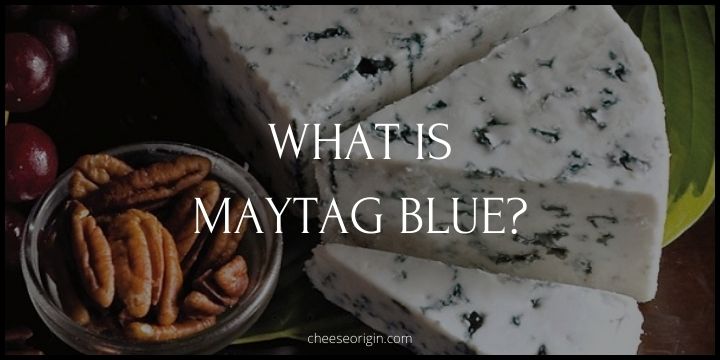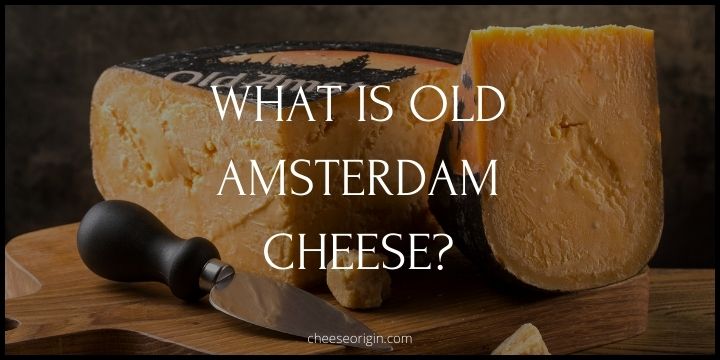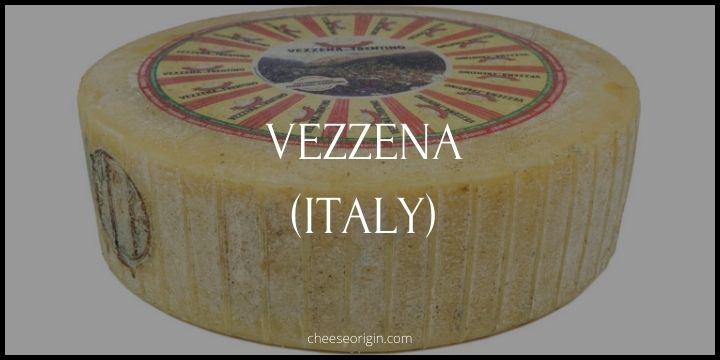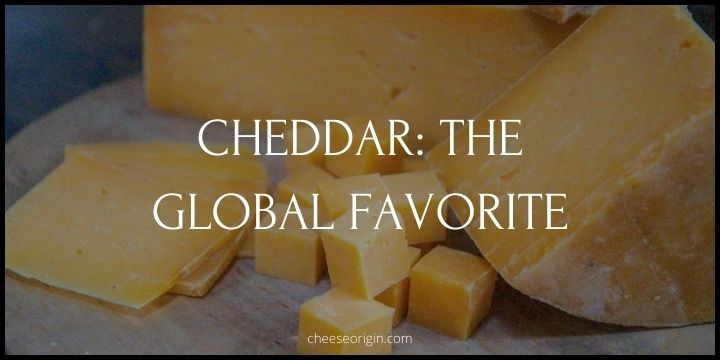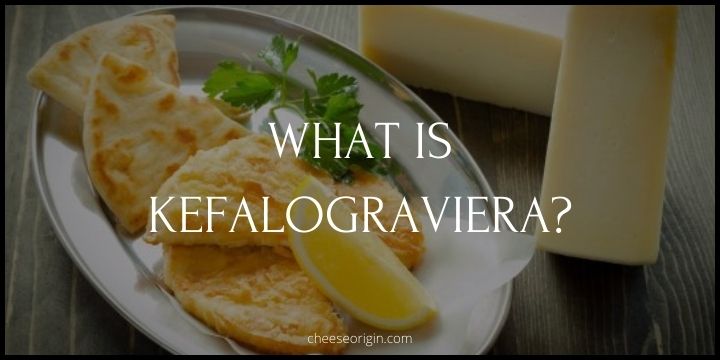The Ultimate Guide to Jarlsberg: Delicious and Nutritious
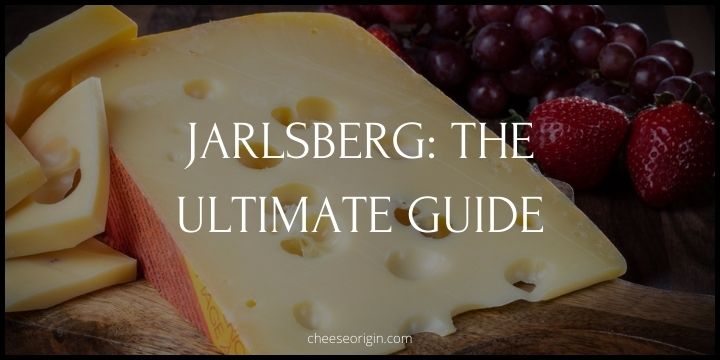
Jarlsberg cheese is not only delectable, but it also holds a wealth of nutritional benefits.
In this in-depth guide, we’ll delve into the mouthwatering world of Jarlsberg cheese, exploring its unique flavors, health benefits, and how you can incorporate it into your daily diet.
So, fasten your seatbelts, cheese enthusiasts, as we embark on this exciting culinary journey!
Quick facts about Jarlsberg
| Quick Facts | Details |
|---|---|
| Origin | Norway |
| Type | Semi-soft |
| Made from | Cow’s milk |
| Texture | Smooth and elastic |
| Flavor | Nutty, mild, sweet |
| Color | Pale yellow |
| Shape | Large, round wheels |
| Aging time | 1 – 15 months depending on the variety |
| Fat content | 27% |
| Protein content | 25g per 100g |
| Calcium content | 731mg per 100g |
| Notable characteristic | Large, irregular holes |
| Best pairing | Fruits, nuts, wine, beer, bread |
What is Jarlsberg?
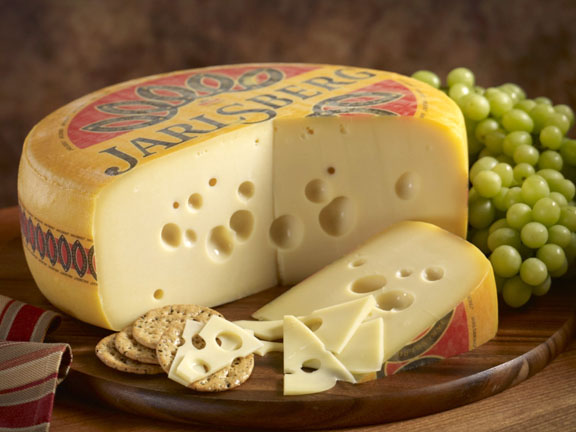
Jarlsberg is a type of cheese that originates from Norway. It’s known for its characteristic large, irregular holes and its distinctive, nutty flavor. Jarlsberg is a semi-soft cheese, made from cow’s milk. The texture is smooth and elastic, and the color is a pale yellow.
The production process of Jarlsberg involves traditional cheese-making techniques, as well as a proprietary strain of bacteria that contributes to its unique flavor and appearance.
This cheese is versatile and can be used in a variety of dishes, or simply enjoyed on its own. Whether it’s melted in a sandwich, diced in a salad, or served on a cheese platter, Jarlsberg adds a touch of gourmet flavor.
What does Jarlsberg cheese taste like?
Jarlsberg cheese is renowned for its distinctive, rich, and nutty flavor. It possesses a mild, sweet, and slightly fruity taste that sets it apart from other cheeses.
The flavor is often compared to Swiss Emmental due to its buttery and slightly sweet profile, but Jarlsberg has a more pronounced nuttiness and a hint of caramel-like sweetness.
Its taste is complex but balanced, making it a versatile cheese that pairs well with a variety of foods and wines. The texture is semi-hard, smooth, and elastic, providing a satisfying mouthfeel.
Jarlsberg tasting notes
- Distinctive Flavor: Jarlsberg has a unique, sweet, and nutty flavor.
- Texture & Appearance: The cheese features a smooth texture and large, round holes.
- Mild & Sweet: Its mild, sweet, and nutty taste adds something extra without dominating the flavor palette.
- Melting Qualities: When melted, Jarlsberg is said to be in a league of its own.
- Buttery Texture: It’s known for its very buttery texture.
- Sweetness: The cheese has a slightly sweet undertone.
- Fruity & Nutty Notes: Its smooth, elastic paste has plenty of fruity, nutty notes.
- Wine Pairing: Jarlsberg is an extremely versatile cheese for pairing with wines, especially medium to full-bodied red wines.
- Color & Consistency: Jarlsberg is described as having a pale yellow color and semi-soft texture.
- Versatility: Jarlsberg tastes delicious with sandwiches, fondues, quiches, and hot dishes.
- Comparison: This cheese resembles a Swiss Emmental but is stronger and sweeter.
Is Jarlsberg the same as Emmental?
While Jarlsberg and Emmental are similar in some aspects, they are not the same. Both are semi-hard cheeses with characteristic large holes, and both have a nutty flavor.
However, there are key differences between them:
| Jarlsberg | Emmental | |
|---|---|---|
| Origin | Norway | Switzerland |
| Taste | Sweet and nutty, with hints of caramel-like sweetness | Mild, slightly nutty, and buttery |
| Production Process | Made from both pasteurized and raw cow’s milk, aged for a minimum of three months | Traditionally made from raw cow’s milk, aged for a minimum of four months |
| Texture | Firm, smooth, more elastic and pliable | Firm and smooth |
| Appearance | Pale yellow color, semi-soft texture, large round holes | Pale yellow color, firm texture, large round holes |
Jarlsberg:
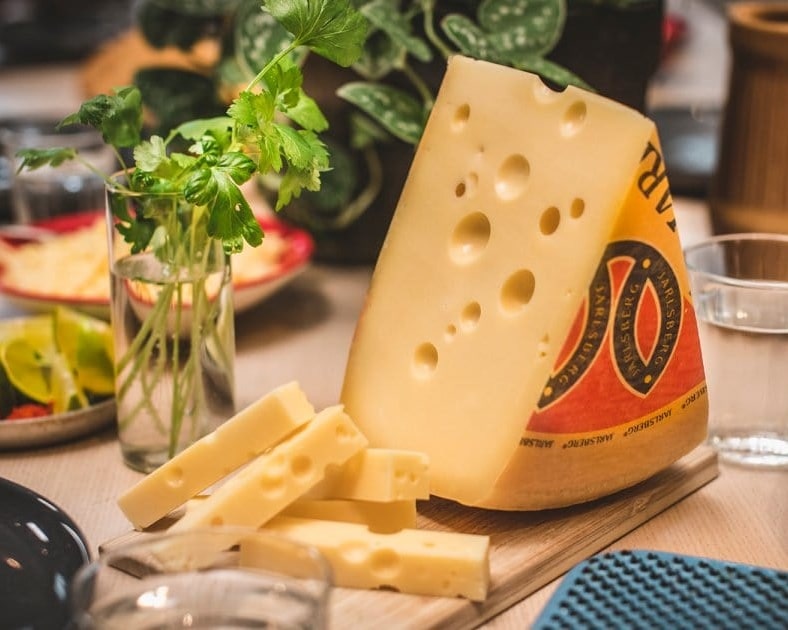
Jarlsberg, with its characteristic large, round holes, semi-soft texture, and mild, nutty flavor, offers a taste experience reminiscent of Swiss cheeses but with a distinctly Norwegian twist.
Emmental:
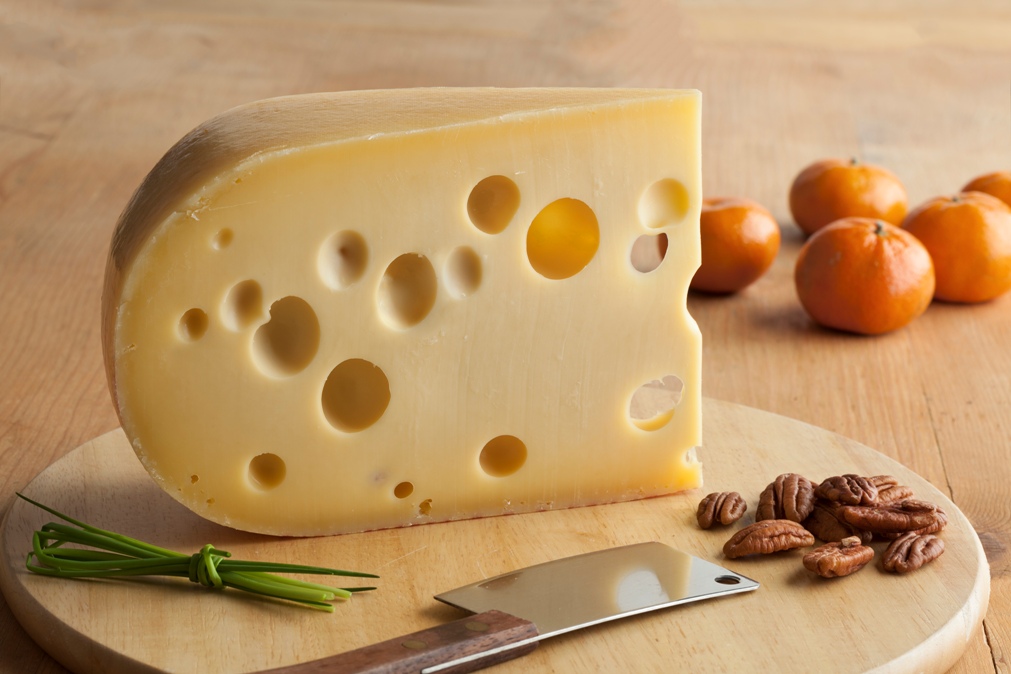
On the other hand, Emmental, known for its iconic larger-than-life holes or “eyes,” presents a firm texture and a slightly fruity, savory flavor that deepens as the cheese ages.
>> Click here to read our in-depth guide on Emmental
While both cheeses share similarities in appearance due to their holey nature, they differ in taste profiles and regional characteristics, offering unique culinary adventures.
Is Jarlsberg cheese healthy?
Yes, Jarlsberg cheese can be considered healthy based on several studies.
- Bone Health: According to a study published in the BMJ Nutrition Prevention, a small daily portion of Jarlsberg cheese may help stave off bone thinning.
- Vitamin K2 Content: Jarlsberg is one of the only cheeses that contains Vitamin K2, which has a known positive impact on bone health.
- Osteocalcin Levels: Earlier research suggested that Jarlsberg cheese boosts levels of osteocalcin, a hormone that gives people stronger bones and teeth.
- Balanced Diet: Although cheese can form part of a healthy, balanced diet, some types can be high in saturated fat and/or salt, and so recommending Jarlsberg, which is mild and lower in these elements, can be beneficial.
However, as with any food, it’s important to consume Jarlsberg cheese in moderation as part of a balanced diet.
Jarlsberg nutrition facts
| Nutritional content | Per 100 g | Per 28 g serving (1 oz) |
|---|---|---|
| Calories | 268 kcal | 70 kcal |
| Protein | 31 g | 9 g |
| Total Fat | 16 g | 3.5 g |
| Saturated Fat | 10 g | – |
| Carbohydrates | 0 g | 0 g |
| Fiber | 0 g | 0 g |
| Sugar | 0 g | 0 g |
| Calcium | – | 20% Daily Value |
| Vitamin A | – | 6% Daily Value |
What is special about Jarlsberg cheese?
- Unique Flavor: It has a sweet and nutty flavor with a hint of caramel-like sweetness that is distinctive and not found in many other cheeses.
- Versatility: Jarlsberg cheese is incredibly versatile. It can be used in a variety of dishes, from sandwiches to fondue, and it melts beautifully, making it perfect for baking and cooking.
- Distinctive Appearance: Jarlsberg is easily recognizable due to its large, round holes and semi-soft texture.
- Vitamin K2 Content: Jarlsberg is one of the few cheeses that contain Vitamin K2, which is known for its positive impact on bone health.
- Norwegian Heritage: Originating from Norway, Jarlsberg cheese is made following a secret Norwegian recipe, adding to its uniqueness and appeal.
- Availability: Despite its specialty status, Jarlsberg is widely available in grocery stores around the world, making it an accessible choice for many cheese lovers.
Is Jarlsberg the same as Gruyère?
While both Jarlsberg and Gruyère are popular types of cheese, they are not the same. Here are some key differences:
| Aspect | Jarlsberg | Gruyère |
|---|---|---|
| Origin | Norway | Switzerland |
| Taste | Sweet and nutty with a hint of caramel-like sweetness | Creamy, nutty flavor that becomes more assertive and complex as it ages |
| Texture | Semi-hard with large, irregular holes | Semi-hard with smaller, regular holes |
| Production Process | Made using a secret Norwegian recipe | Traditionally made in large wheels and aged for several months |
| Usage | Versatile; often used in sandwiches and salads | Versatile; popular in baked dishes like quiches and gratins |
| Appearance | Pale yellow with large, round holes | Light yellow with small to medium-sized holes |
| Aging Period | Typically 1-15 months | Typically 5-12 months, but can be aged up to 10 years for reserve Gruyère |
| Nutritional Content (Per 100g) | 268 kcal, 31g Protein, 16g Total Fat, 0g Carbs | Approximately 413 kcal, 29.81g Protein, 32.34g Total Fat, 0.36g Carbs |
Jarlsberg:
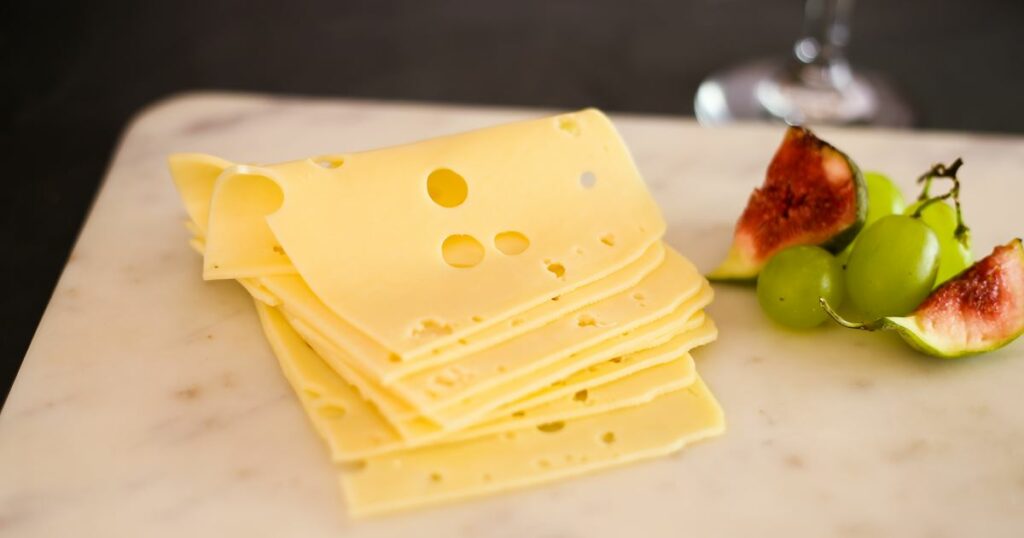
Jarlsberg hails from Norway, and it’s noted for its characteristic large holes, akin to Swiss cheese, and its semi-soft texture.
It has a gentle, nutty flavor, with a hint of sweetness – a versatile taste that lends itself well to a variety of dishes, from melting on toast to grating over pasta.
Gruyère:
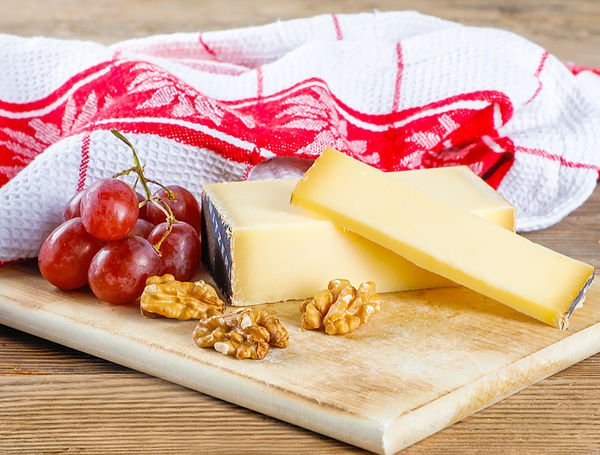
Gruyère, a Swiss classic, is a hard cheese, with a dense and slightly grainy texture. Its flavor is a rich tapestry of tastes – creamy and nutty when young, but as it matures, it develops more profound, earthy tones.
Gruyère is renowned for its excellent melting properties, making it a star ingredient in dishes like fondue and French onion soup.
>> Click here to read our in-depth guide on Gruyère
While both cheeses have their roots in European tradition and share a nutty undertone, they offer distinctly different culinary experiences.
Why is Jarlsberg cheese so expensive?
- Production Process: Jarlsberg is made using a secret Norwegian recipe, which contributes to its unique flavor. This specialized process can add to the cost of production.
- Quality: Like many specialty cheeses, Jarlsberg is considered a high-quality product. High-quality cheeses often command higher prices due to the quality of the ingredients used and the care taken during the production process.
- Import Costs: If you’re buying Jarlsberg outside of Norway, import costs can add to the price. This includes transport, customs duties, and any other fees associated with bringing the cheese to market in a different country.
- Cost of Living in Norway: Norway has one of the highest costs of living in the world. This means that products produced there, including Jarlsberg cheese, can be more expensive due to higher production costs.
- Changes in Production: Some sources indicate that changes in Norwegian dairy export subsidies have led to shifts in where Jarlsberg is produced, potentially impacting its price.
Can I use Jarlsberg instead of Swiss cheese?
Yes, you can use Jarlsberg cheese as a substitute for Swiss cheese in most recipes. Both cheeses have a similar semi-hard texture and nutty flavor, although Jarlsberg tends to be slightly sweeter and has larger holes than traditional Swiss cheese.
However, keep in mind that the taste and texture of the final dish might vary slightly due to the differences between these two types of cheese. For instance, Jarlsberg melts well and can provide a creamier texture in melted cheese dishes compared to Swiss cheese.
So, if you’re making a recipe that calls for Swiss cheese and you only have Jarlsberg on hand, feel free to use it. The result should still be tasty, even if it’s not exactly the same as the original recipe.
>> Click here to read our in-depth guide on Swiss Cheese
How do you eat Jarlsberg cheese? Pairing guide
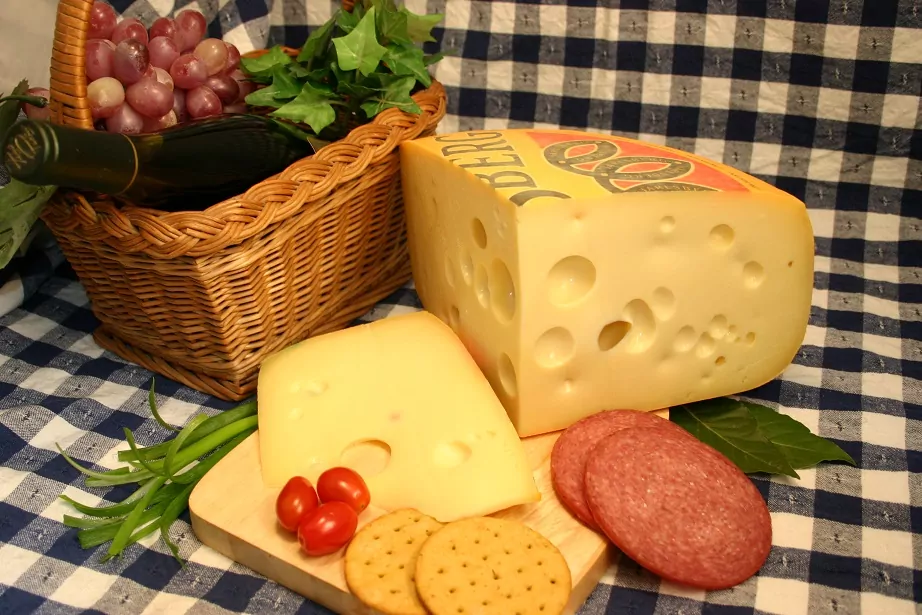
Food that goes well with Jarlsberg
| Category | Food Items |
|---|---|
| Meats | Bacon, Pastrami, Salami, Pepperoni, Ham, Turkey, Sausage |
| Vegetables | Spinach, Avocado, Cherry Tomatoes, Sweet Potatoes, Crunchy Veggies |
| Fruits | Spring Fruits, Apples (in soup) |
| Breads and Grains | Toast, Crackers, Pretzels |
| Dishes | Hash Brown and Sausage Casserole, French Onion & Apple Soup, Mushroom & Jarlsberg® Panini, Slow Cooker Mac & Cheese, Grilled Cheese Dippers, Cheese & Spinach Omelette |
| Dips & Spreads | Jarlsberg Cheese Dip |
Also read: 11 Best Crackers that Pair Well with Cheese
Beverage that goes well with Jarlsberg
| Category | Beverage |
|---|---|
| Red Wines | Pinot Noir, Cabernet Sauvignon, Merlot, Beaujolais, Amarone |
| White Wines | Sauvignon Blanc, Chardonnay (Californian and Chilean), Riesling, Pinot Gris |
| Sparkling Wines | Champagne |
Also read: Best Wine and Cheese Pairings: The Ultimate Guide
7 best Jarlsberg substitutes
| Cheese | Description |
|---|---|
| Gruyere | Gruyere cheese is often considered as a top substitute for Jarlsberg. It has a similar color and melting properties. Gruyere is slightly more flavorful, with a nutty, sweet taste that can enhance many dishes. |
| Emmental | Emmental cheese is another good substitute for Jarlsberg. It has a similar mild, nutty flavor and semi-soft texture. Emmental is a Swiss cheese known for its distinctive holes or “eyes”. |
| Swiss Cheese | Swiss cheese shares a similar flavor profile and texture with Jarlsberg. It’s a versatile cheese that can be used in a variety of dishes. However, Swiss cheese usually has smaller holes compared to Jarlsberg. |
| Gouda | Gouda is a Dutch cheese that has a slightly sweeter flavor compared to Jarlsberg. It melts well, making it a good alternative for recipes that require melted cheese. |
| Havarti | Havarti is a Danish cheese that has a buttery aroma and a slightly acidic flavor. It’s creamier than Jarlsberg but shares a similar semi-soft texture. |
| Comté | Comté is a French cheese that is fruity and nutty in flavor. It shares a similar color with Jarlsberg and can be a good alternative in dishes that require cheese with a strong flavor. |
| Beaufort | Beaufort is another French cheese that can be a good substitute for Jarlsberg. It has a slightly stronger flavor and melts well, making it suitable for a variety of dishes. |
The History and Origin of Jarlsberg Cheese
Jarlsberg Cheese is a mild, semi-soft cow’s milk cheese with a fascinating history that hails from Norway. The story of this cheese stretches back to the 1850s, when Anders Larsen Bakke, a pioneer in Norway’s dairy industry, first produced it. However, the cheese we know today as Jarlsberg was developed in the 1950s in the small Norwegian village of Ås.
The modern development of Jarlsberg Cheese involved a professor named Ole Martin Ystgaard at the Norwegian University of Life Sciences. He and his team discovered the secret behind the large holes or “eyes” in Swiss Emmental cheese and applied this knowledge to create a new variety of cheese. This cheese, initially sold as “research cheese” or “extra cheese,” was eventually sanctioned by the Norwegian Ministry of Agriculture as Jarlsberg.
But the story doesn’t end in Norway. Today, Jarlsberg is not only produced in its homeland but also in Ireland and the USA. Its unique taste and versatility have gained popularity worldwide, making it a staple in many kitchens.
Despite its global production, Jarlsberg remains true to its Norwegian roots. It still carries the distinctive characteristics of its origin – a semi-soft texture, a mild flavor, and large, round holes. Whether enjoyed on its own or used in cooking, Jarlsberg continues to be a delight for cheese lovers around the world.
Frequently Asked Questions
1. How to pronounce Jarlsberg?
Jarlsberg is pronounced as “YAHRLS-berg”. The “J” in Jarlsberg is pronounced like a “Y” due to its Norwegian roots.
2. Is Jarlsberg a good melting cheese?
Yes, Jarlsberg is considered a good melting cheese. Its semi-soft texture and mild flavor make it ideal for various culinary uses, including dishes that require melted cheese.
However, it’s important to note that while Jarlsberg is generally a good melting cheese, the results may vary depending on the specific piece of cheese and how it’s used.
Aged or harder pieces may not melt as well as younger, softer pieces.
Also read:
- Menonita Cheese: A Staple in Northern Mexican Cuisine
- All About Roquefort: An Insider’s Guide to the King of Blue Cheese
- Asiago Cheese: An In-depth Exploration of Nutrition and Taste
- The Ultimate Guide to Muenster Cheese: Savor the Flavor
- Ricotta Guide: All You Need to Know About This Versatile Cheese
- The Ultimate Guide to Chèvre: Exploring Goat Cheese
- The Ultimate Guide to Kasseri: A Taste of Tradition
